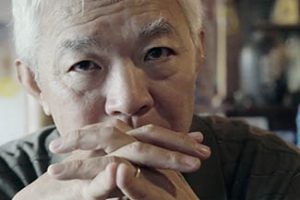Approximately 60 percent of stroke patients develop some form of visual impairment.
A stroke occurs when there is an interruption of blood flow to the brain. Strokes usually affect one side of the brain, causing brain damage and a wide range of life-altering conditions and impairments that can affect vision, speech, language, memory, swallowing, movement, and more.
The initial symptoms of a stroke typically include sudden loss of speech, confusion, headache, seizure, weakness or paralysis on one side of the body, and visual disruptions.
Seek immediate medical attention if you or someone you know is experiencing any of these symptoms. The sooner treatment is received, the higher the chances of recovery.
What are the visual symptoms following a stroke?
Visual symptoms from a stroke can take a few weeks to develop. However, a neuro-optometrist may be able to detect visual problems, even before any symptoms appear.
Therefore, even if visual symptoms do not present immediately following a stroke, it is important to be seen by a neuro-optometrist as soon as possible to avoid potential complications and begin treatment.
Post-stroke visual symptoms can vary depending on the type and severity of the stroke, but can include any of the following:
- Sudden, temporary blindness in one eye
- Double vision (diplopia)
- Blurred vision
- Visual field loss
- Eye movement abnormalities
- Visual perceptual defects
- Sensitivity to bright light (photophobia)
- Difficulty with facial and object recognition
A neuro-optometrist will evaluate your vision acuity, visual field and visual skills and look for signs of any visual dysfunction.
If you have had a stroke, contact an eye doctor near you, who can diagnose and treat any underlying vision problems.
SEE RELATED: Vision Therapy after a Stroke
Visual midline shift vision (VMSS)
Visual midline shift vision (VMSS) can occur when a stroke causes damage to the spatial visual process in the brain. As a result, you may lean your body toward one side in order to compensate— leading to poor posture, balance, and movement (gait).
If you are experiencing VMSS, schedule an appointment with a neuro-optometrist.
Your neuro-optometrist can prescribe prism lenses to treat your imbalance and visuomotor symptoms by changing the way you see.
What is neuro-optometric rehabilitation?
Neuro-optometric rehabilitation is an evidence-based therapy program provided by neuro-optometrists to improve vision following a stroke, traumatic brain injury, or other neurological conditions.
The brain’s neuroplasticity allows you to establish new neural pathways to regain function of the affected areas of the brain.
Each rehabilitative program is designed to retrain the neurological connections between the eyes and brain to improve the visual skills necessary for:
- Visual information processing
- Visual memory
- Balance
- Motor skills
A neuro-optometric rehabilitation program may include any of the following techniques or devices:
- Exercises for peripheral awareness
- Prism adaptation training
- Visual scanning
- Optical tints
- Yoked prism lenses
- Spotting/sector prisms
- Sector occlusions
LEARN MORE: Guide to Neuro-Optometry
If you or a loved one has suffered a stroke, schedule an appointment with a neuro-optometrist as soon as possible.
The earlier the visual symptoms from a stroke are diagnosed and treated, the greater your chances for improved functional vision — necessary for all aspects of daily living.









